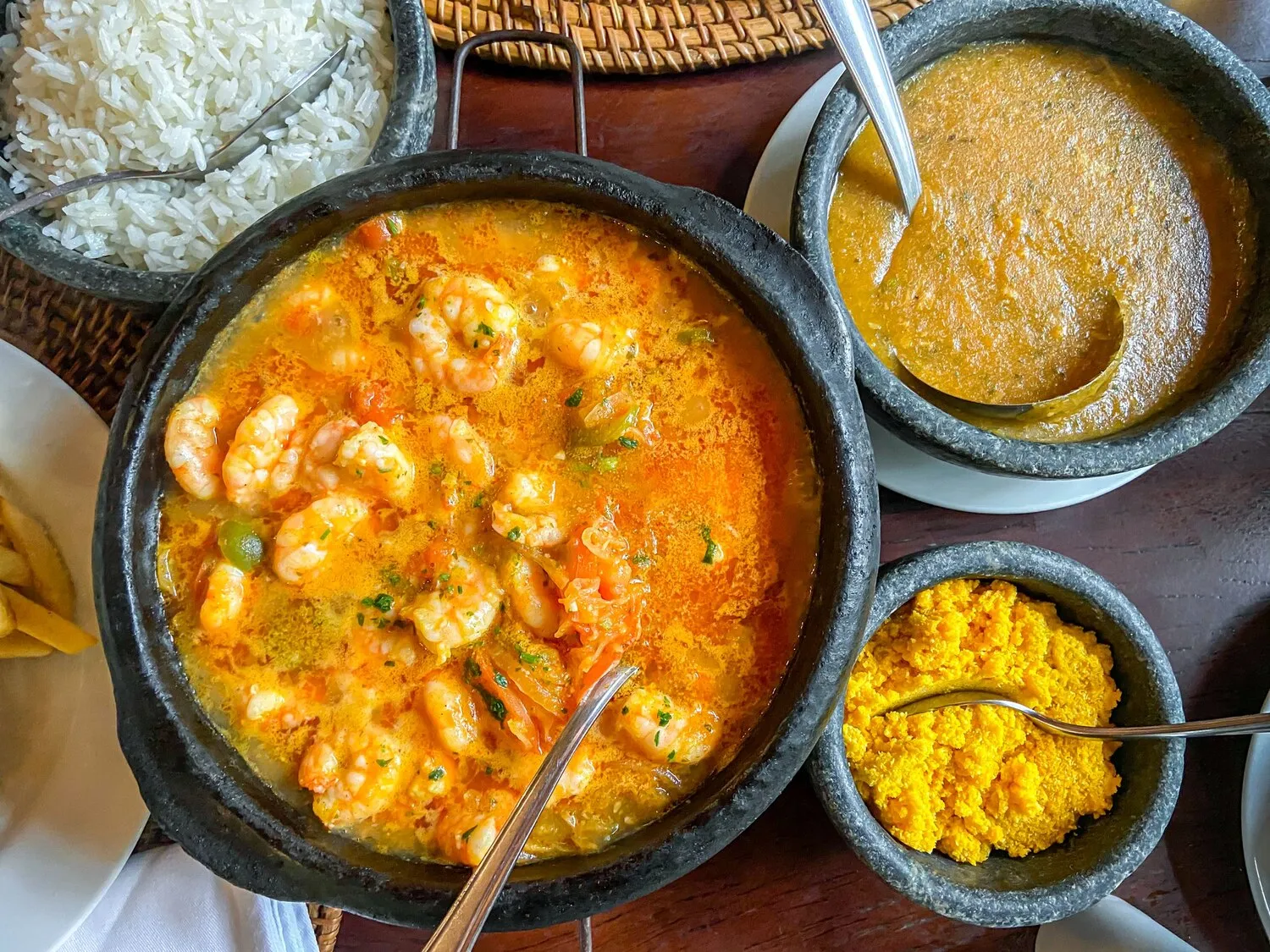
Moqueca Capixaba
Brazilian seafood stew made with fish, shrimp, coconut milk, and vegetables, served with rice.
Nutrition Facts
* The % Daily Value (DV) tells you how much a nutrient in a serving of food contributes to a daily diet. 2,000 calories a day is used for general nutrition advice.
Xerelete Bar
Moqueca Capixaba is deeply rooted in the culinary traditions of the indigenous peoples of Espírito Santo, Brazil. It evolved through the influence of Portuguese colonization and the introduction of African ingredients and cooking techniques. It represents a fusion of cultures adapted to the local environment and available ingredients.
Moqueca Capixaba is more than just a dish; it's a symbol of Espírito Santo's culinary identity and a source of regional pride. It's often served during family gatherings and celebrations, representing hospitality and shared meals.
Regional Identity
Moqueca Capixaba is considered the state dish of Espírito Santo, differentiating itself from the Bahia version which uses dendê oil.
Family Traditions
The preparation and enjoyment of Moqueca Capixaba are often passed down through generations, with family recipes varying slightly.
Festivals and Celebrations
Moqueca is often featured in regional food festivals and celebrations, highlighting the state's culinary heritage.
Moqueca Capixaba offers a delicate and balanced flavor profile, combining the sweetness of seafood with the subtle heat of annatto and peppers, all enriched by the creamy coconut milk. It's a savory and subtly sweet experience.
The dominant flavor comes from the fresh seafood, typically a combination of firm white fish (like sea bass or grouper) and shrimp. Annatto seeds (urucum) provide a subtle earthy flavor and vibrant orange color. Onions, tomatoes, and bell peppers contribute sweetness and freshness. Cilantro adds a bright, herbal note. Coconut milk imparts richness and sweetness, creating a creamy and comforting broth. Malagueta peppers offer a subtle kick of heat. The absence of dendê oil, which is used in Moqueca Baiana, makes Capixaba moqueca milder and lighter.
Freshness is Key
Use the freshest seafood available. The quality of the fish and shrimp will significantly impact the final flavor of the dish.
Layering the Flavors
Build the moqueca in layers, starting with the vegetables and gradually adding the seafood and coconut milk. This helps to distribute the flavors evenly.
Gentle Cooking
Cook the moqueca over low heat, allowing the flavors to meld together without overcooking the seafood. Avoid stirring too vigorously to prevent the fish from breaking apart.
Urucum Seeds/Annatto
Annatto seeds or powder is used to give the stew its distinctive color, but don't overdo it. You can infuse oil with the seeds for better control of color and flavor. Start with a small amount.
Explore additional Stew dishes and restaurants
Explore StewDiscover top dining spots and culinary experiences in Armação dos Búzios.
Explore Armação dos BúziosLearn more about the food culture, restaurant scene, and culinary heritage of Brazil.
Explore Brazil